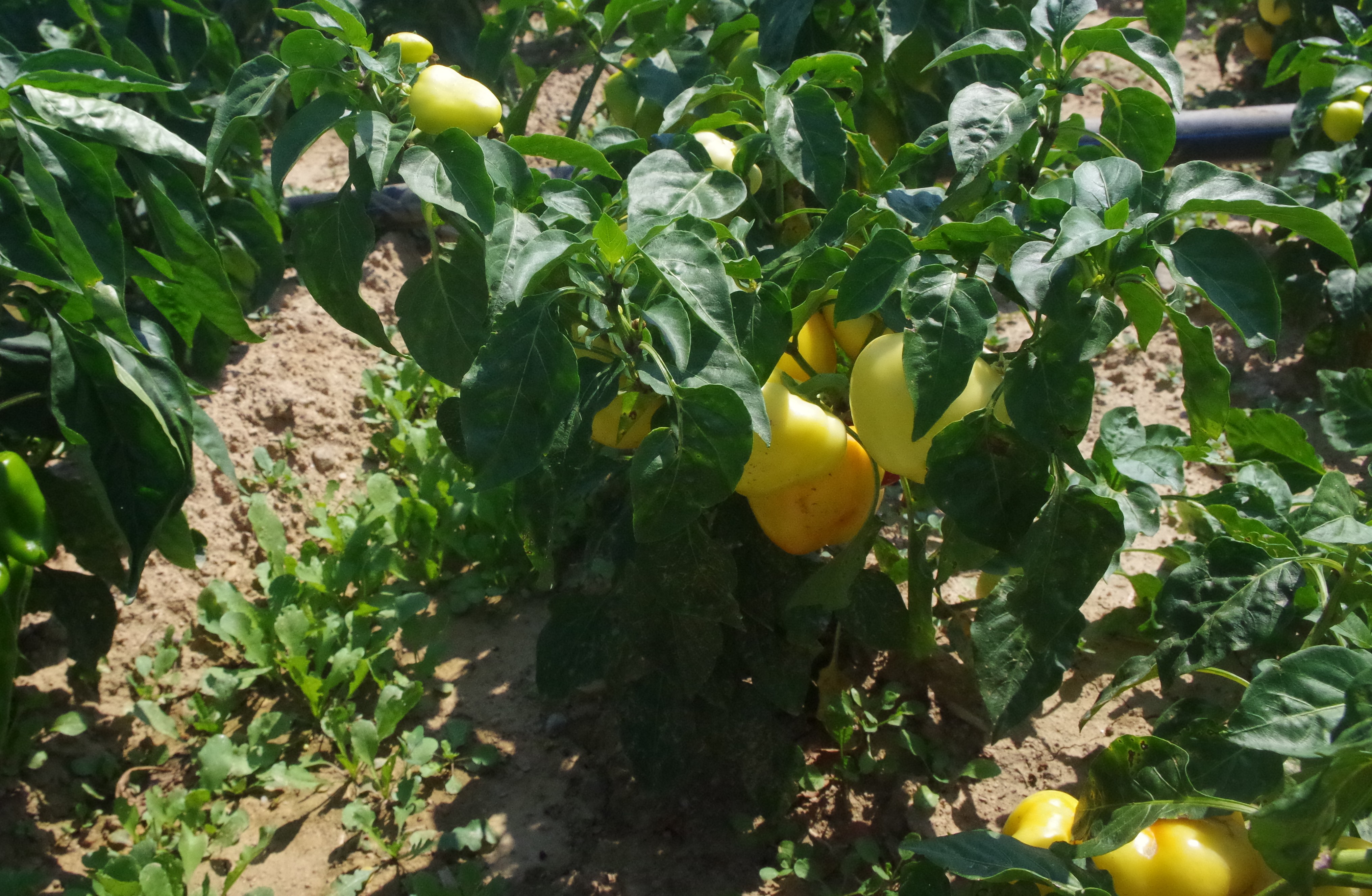Yield Performance of Sweet Pepper (Capsicum Annuum) Treated with Inorganic and Organic Fertilizer
DOI:
https://doi.org/10.59120/drj.v11i2.462Keywords:
Inorganic fertilizer, sweet pepper (Capsicum annuum), organic fertilizer, treatment combination (organic and inorganic), yield performanceAbstract
This experimental study aimed to determine the yield and growth of sweet pepper under varying soil conditions and to determine the performance of the different treatments. There were four treatments, replicated three times. The treatments were as follows: treatment 1 (control), treatment 2 (inorganic fertilizer), treatment 3 (organic fertilizer), and treatment 4 (combination of inorganic and organic fertilizers). The variety of sweet pepper used was SULTAN F1, a high-yielding conical, dark green hybrid sweet pepper with a good year-round adaptation. Fruits have a long shelf life and are marketable up to 7 days after harvest. This is an early maturing variety, harvestable at 55-60 d after transplanting. It has strong pest and disease tolerance to bacterial spot and bacterial wilt. After planting, each plot received different treatments based on the study. During production, the project encountered insects that can cause damage to some of the plant fruits. To mitigate this situation, a mixture of sterilized water, malathion, and effective microorganism (EM-5) was applied at a single application, following the recommended rate of application. In addition, results showed that the plant height and fruit weight in treatment 4 (T4) performed better than other treatments. However, in terms of replication or blocking of the experiments, no significant differences was observed. This shows that a combination of inorganic and organic fertilizer is effective for the yield performance of sweet pepper.
Downloads
References
Anonymous. (1989). The Philippines Recommends for Sweet Pepper. Rev. Ed. Los Bañoz, Laguna. PCARRD
Bosland, P.W. and Votava,E. J. (1999). Peppers: Vegetable and Spice Capsicums. Part of the Crop Production Science in Horticulture series, published by CABI (Wallingford, UK). https://www.cambridge.org/core/journals/experimental-agriculture/article/abs/ peppers-vegetable-and-spice-capsicums-by-p-w-bosland-and-e-votava-wallingford uk-cabi-publishing-1999-pp-204-2750-isbn-0851993354/F922ADE9E386806E9938D4AAEAFB20F3
Bukas, R. T., & Briones, R. M. (2007). The Philippines recommends for sweet pepper. Los Baños, Laguna: PCARRD. States that sweet pepper (Capsicum annuum L.) is a member of the family Solanaceae. https://cagayanvalley.da.gov.ph/wp-content/uploads/2018/02/Pepper.pdf
El-Sayed, S. F., Shahein, M. M., Hassan, H. A., & Abou-El-Hassan, S. (2015). Producing sweet pepper organically using different sources of organic fertilizers under plastic house conditions. International Conference on Advances in Agricultural, Biological & Environmental Sciences (AABES-2015), London, UK.
Gagnon, B., & Berrouard, R. (2007). Organic fertilization and its effect on development of sweet pepper (Capsicum annuum L.) transplants. Hort Science, 47(2), 198–203.
https://doi.org/10.21273/HORTSCI.47.2.198
Garton, B. L., & Bodnar, J. M. (1991). Peppers: Vegetable Crops Production Guide for the Atlantic Provinces. Atlantic Provinces Agriculture Services Coordinating Committee.
Ghimire, S., Shakya, S. M., & Srivastava, A. (2013). Effects of organic manures and their combination with urea on sweet pepper production in the mid-hills. Journal of Agriculture and Environment, 14, 23–30. https://doi.org/10.3126/aej.v14i0.19783
Gomez K., & Gomez A. (1976). Statistical Procedure for Agriculture Research Canada: John Wiley & Sons DOI: https://doi.org/10.1017/S0014479700014496
Islam, M. S., Hossain, M. M., & Rahman, M. M. (2015). Effect of inorganic and organic fertilizers on soil properties with vegetative growth and yield quality of sweet pepper (Capsicum annuum L.) in Bangladesh. International Journal of Agriculture and Agricultural Research, 11(5), 37–46.
Khalid, K. H. A., & Shafei, A. M. (2005). Productivity of dill (Anethum graveolens L.) as influenced by different organic manure rates and sources. Arab University Journal of Agricultural Sciences, 13(3), 901–913.
Lorejo, F.T Jr. (2009) Yield performance of sweet Sorghum (Sorghum bicolor L. Moench): varieties using different Organic Fertilizer materials. Compostela Valley Province: USEP, Mabini Campus.
Martin Cornell (1994). Vegetable Production Handbook. Retrieved @ http://vegetablescrops.com.ph/ on July 11, 2015.
Nasef A., & Palada S. (1996). The Groiler Encyclopedia Incorporated Danbury. Retrieved on July 15, 2015.
Ramesh, P., Singh, M., & Rao, A. S. (2005). Organic farming: Its relevance to the Indian context. Current Science, 88(4), 561–568.
Sampiri, J. et al. (2009) Yield Performance of Broccoli Plant In Direct Seeded and Transplanted Under Greenhouse Condition at DOSCST. Mati City: DOSCST
Silva, A. R., Oliveira, A. A., & Lima, M. I. (2012). A comparison of poultry litter applied like organic fertilizer and that applied like chemical fertilizer in corn development. Journal of Plant Nutrition, 35(10), 1511–1522. https://doi.org/10.1080/01904167.2012.690367
Thomas, D. (1997). Poultry manure is a good source of major and minor mineral elements that are capable of enhancing soil fertility on application. International Journal of Poultry Science, 3(2), 84–86.
Thompson M. (1996). Vegetables Crops. Retrieved @ http://vegetablescrops.com.ph/ on July 11, 2015.
Waddington, S. R. (1998). Organic matter management. In S. R. Waddington (Ed.), Soil fertility research for maize-based farming systems in Malawi and Zimbabwe (pp. 155–158). CIMMYT
Wien, H. C. (Ed.). (1997). The physiology of vegetable crops. Wallingford, UK: CAB International.
Villamor A., & Soludores G. (2008) Experimental Statistic and Laboratory Manual. Bukidnon: CMU, Maramag
Zhang, Y., Li, C., Wang, Y., Hu, Y., Christie, P., Zhang, J., & Li, X. (2016). Maize yield and soil fertility with combined use of compost and inorganic fertilizers on a calcareous soil on the North China Plain. Soil& Tillage Research, 155, 85–94. https://doi.org/10.1016/j.still.2015.still.2015.08.006. SCiNiTO.still.2015.08.006. SCiNiTO still.2015.08.006. SCiNiTO
Zayed, M. S., Hassanein, M. K. K., Esa, N. H., & Abdallah, M. M. F. (2013). Productivity of pepper crop (Capsicum annuum L.) as affected by organic fertilizer, soil solarization, and endomycorrhizae. Annals of Agricultural Sciences, 58(2), 131–137. https://doi.org/10.1016/j.aoas.2013.07.008

Downloads
Published
Issue
Section
License
Copyright (c) 2016 Flemar Granada Pagsac, Necito A. Baldoz

This work is licensed under a Creative Commons Attribution-NonCommercial 4.0 International License.
DRJ is an open-access journal and the article's license is CC-BY-NC. This license allows others to distribute, remix, tweak, and build on the author's work, as long as they give credit to the original work. Authors retain the copyright and grant the journal/publisher non-exclusive publishing rights with the work simultaneously licensed under a https://creativecommons.org/licenses/by-nc/4.0/.





